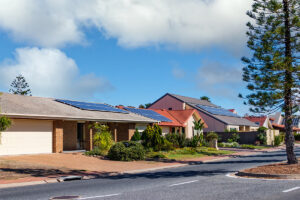On Easter Saturday, at 11:20am, renewable energy supplied 50.7% of the power to Queensland, New South Wales, South Australia, Victoria & Tasmania. These 5 states are served by the National Electricity Market, whilst Western Australia and the Northern Territory have separate grids. Dylan McConnell, the developer of the tool that tracks the proportion of power generated by renewables, told ABC News that green energy first broke 50% in November 2019. He added that Easter Saturday set the record for the proportion of renewable energy used and the amount of time it held above 50%. In November 2019, it stayed over 50% for 10 minutes, whereas on Easter Saturday it stayed above 50% for a couple of hours. Hopefully, this indicates a trend that renewables are gaining popularity, and that records like this will continue to be broken in the near future. So far, 2020 has had some encouraging and exciting news around the transition to renewable energies. The Smart Energy Council led a fantastic Stimulus Summit about Renewable Led Economic Recovery. The Summit was filled with leaders in business, civil society, policy makers and academia to debate government stimulus packages and climate change action. Anna Skarbek, CEO of ClimateWorks Australia, the body who aim to accelerate the transition between research and climate action, shared some interesting and hopeful data during the summit. Skarbek highlighted just how far Australia has come to close the technical gap which will make zero emissions pathways possible in all sectors. We have demonstrated solutions for electricity, buildings, transport, industry, and agriculture, and each have emerging solutions to further improve them. By 2030, she mentions that in the buildings, transport and industry sectors, up to 75% of energy used will be renewable. We will see deeper energy efficiency, electrification and a fuel switch. Skarbek highlighted that in order to transition to renewables, we need continuous strong action by governments, business and individuals. Governments can demonstrate their actions with incentives, investment and supporting renewable infrastructure. Businesses can shift their purchasing behavior, create new business policy and invest in R&D. Importantly, consumers do have power, we can shift our consumption and behavior to support this transition, and we can pay a premium price for energy coming from sustainable sources to demonstrate our want for change. Another exciting endeavor came from Tasmania in March 2020. They have set a world leading target of 200% renewable energy use by 2040, with the aim of commercially exporting hydrogen by 2030. This is all a sign of what is to come, we hope to see Australia continue to make positive change in the green energy arena and fight to achieve the goals outlined in the Paris 2030 agreement.

WA Households Hit with Power Price Rise as Electricity Credit Scrapped
From 1 July 2025, Western Australian households will face higher electricity bills as the state government rolls back its electricity credit and increases tariffs. $400…
Read More >>









